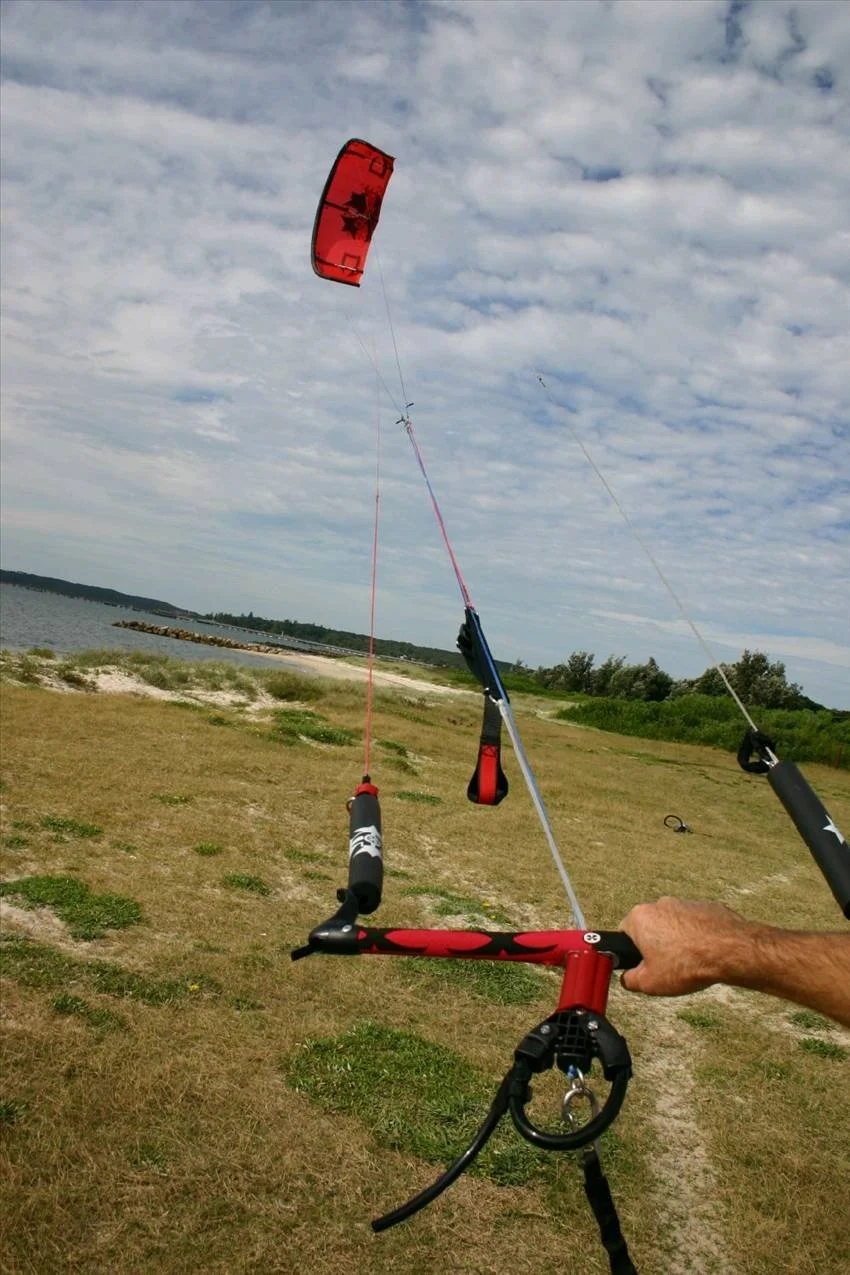The evolution of kitesurfing safety gear
The early days: Basically flirting with danger
Let’s roll back to the late 1990s and early 2000s, when kitesurfing was still the new reckless kid on the block. Safety gear? That was basically “try not to die.”
Harnesses: Early waist harnesses were borrowed straight from windsurfing. They weren’t designed to handle the insane upward pull of a kite. Hello, surprise spinal adjustments.
Bars: Back then, bars often lacked any effective depower. Your best bet was to muscling through it, or praying the wind gods would chill out.
Leash systems: If you had a leash at all, it was probably a basic board leash. Yup, the one that snapped boards back at your head like angry boomerangs.
It wasn’t exactly confidence-inspiring. Kiters would often launch massive kites with no quick release. If things went south? You held on for dear life.
Enter the chicken loop: The game changer
Around the mid-2000s, brands started figuring out kiters weren’t actually superhuman. Thus came the first real chicken loops, which allowed you to hook into the harness and direct the pull through your waist instead of your arms. Combine that with the depower trim strap, and suddenly you could adjust how much power your kite had on the fly. Revolutionary stuff.
Then came quick release systems, which actually let you ditch the kite in an emergency. Early quick releases were clunky and sometimes jammed (sketchy!), but it was a massive leap toward making the sport less about survival, more about style.
The safety leash evolves
Remember those old leashes attached to the back of your harness? When you activated your quick release, the kite would still pull from your body, often spinning you around like a drunken carousel. Enter the front leash, connected to the front of your harness and attached to a single line for flag-out. Now when you release, the kite loses all power and flops safely.
Most modern leash systems are suicide leashes (still a terrible name) that keep the kite flying so you can unhook for tricks. But they’re designed to fail safe if you trigger the quick release unhook, ride, loop, then ditch when needed.
Impact vests & helmets: From kook to cool
Back then, wearing an impact vest or helmet meant you were clearly a newbie. Now? It’s just smart. Impact vests don’t just soften your ribs; they also float you better, helping in heavy surf or after a hard crash. Helmets have gotten sleeker too, with lightweight models that stay secure even on big wipeouts.
Many pros rock them now because their sessions are gnarlier, and their heads apparently matter. Who knew?
Today’s tech: Your life literally in your hands
Modern gear is so dialed that it’s almost boring how well it works. (Almost.)
Quick release 4.0 and beyond: Modern systems like Duotone’s Click Bar or Cabrinha’s modular setups allow effortless, one-handed releases under load, and easy re-arming even in chop.
Auto-swivels & ceramic bearings: Reduce line twists, keeping your safety lines functional.
High-visibility safety leashes: So your buddy doesn’t lose sight of you mid-crash.
Harnesses are also more ergonomic, distributing load evenly to protect your back. And helmets and vests are designed with kitesurf-specific impacts in mind.
Bar pressure adjustments, multiple line length options, and even wind sensors that talk to your smartwatch, it’s like we went from horse cart to Tesla in two decades.
The future: Smart tech & next-level protection
So what’s next? A few wild (but honestly close) ideas:
Wearable sensors: Companies are already experimenting with sensors that track your G-forces, automatically logging sketchy crashes or even calling for help if you’re knocked out. Think snowboard avalanche beacons, but for kites.
Inflatable back protectors: Inspired by motorcycle airbags, these could inflate upon heavy impacts.
AI-driven gear diagnostics: Imagine an app telling you, “Hey mate, your lines are 10% stretched, your quick release spring is tired, replace it before next session.” Goodbye unexpected gear failures.
It’s not just about keeping you safe, it's about letting you push harder, jump higher, and come home stoked instead of stitched up.
Keep your sessions sendy, not sketchy
Kitesurfing will always carry some risk, that’s half the thrill. But safety gear is now so good that there’s no excuse to not use it. Keep your bar tuned, check your lines, wear that helmet if you’re sending big, and don’t let your ego rig up for winds your skills can’t handle.
If you want to get nerdy, hit up How safe is your kite gear? or browse the IKO’s safety resources.
The wind’s waiting
So next time someone scoffs at your helmet or laughs at your impact vest, just smile. Because chances are, they’ll be the ones buying the beers after you ride longer, safer, and with a story that ends with laughter instead of stitches.
Now gear up smart, pull that quick release test, and go make your grandma proud. Or at least slightly less worried.
xox Berito


